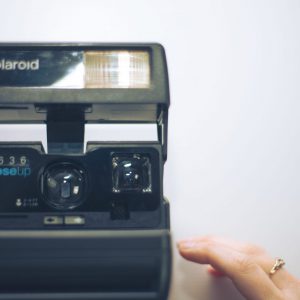Video
One step closer to getting an audition!
Why does a good video make your case?
This could be the first time a director sees you dance and as we know first impressions matter!
How you send your videos and what you send in them is very important. Below we will look at the key points you need to focus on. Here is a brief overview of what we will cover in this section:
- Showreel vs Performance/Rehearsal footage
- Class and Improvisation videos
- How to send your videos
- Helpful tips

Showreels vs Performance/ Rehearsal videos
What is a showreel?
A showreel is a video of snippets of work you have done. Usually, it is no longer than 2-3 minutes. It showcases you in a variety of work (your best work).
Performance/Rehearsal Videos
These are pretty self-explanatory. It is a video of you either on stage performing or in the studio.
What should my showreel look like?
- Select your best work showcasing you doing a variety of movements. This gives the person watching an overview of you as a dancer and your different qualities.
- Use in studio/rehearsal footage and stage/performance footage.
- Try selecting different work. Perhaps something more lyrical, and then something edgier or staccato and/or something in pointe shoes. Don’t put yourself in one box and only show that.
- As you will be editing different dances together it can be a good idea to use one piece of music for your showreel. Giving it continuity so it will be more enjoyable to watch. So, pick your music wisely! Instrumental music is usually preferable, something that won’t over power you, the artist dancing.
Your Performance/ Rehearsal Video
- You should be very clear and visible in your videos.
- Don’t send the whole ballet!! Only send a solo or pas de deux with you visible.
- If your video is on stage make sure it is close enough for the viewer to see you move clearly.
- If your video is in the studio/rehearsal make sure there is not too much happening in the background to distract the viewer from watching you. Ideally, you want to have the background clear and just you /you and your partner in the video.
- Separate each solo or pas de deux into separate videos.
- Your video should generally be about 2-3 minutes long.
Class and Improvisation Videos:
Videos of your class work work best when you are alone in the studio.
Your videos should be of you doing class work and not include other dancers. It should be filmed in a light studio so you are visible. Make sure you are wearing appropriate attire. No baggy clothes and loose hair!! Treat this video like a performance.
Classical Class:
- Wear tight-fitting clothes. The best option would be tights or fitted shorts and a leotard or tight top.
- Ballet shoes and pointe shoes (if required and/or requested)
- A, small skirt if you would like but the viewer should be able to see your legs and feet working.
- Your hair should be neat and away from your face. There is nothing more annoying than to watch someone more interested in fixing their hair or clothes in these videos.
Generally, your video should consist of the following:
Barre work;
Plies
Tondues
Rond jambe
Fondues
Developé
Grand Battemont
Center;
Adage
Simple piroette (prehaps with a tondu)
Grand pirouette (perhaps moving from the corner)
Pette allegro
Medium Allegro (sisonne, assemble, jete)
Grand allegro
Contemporary Class:
- Be sure to feel comfortable in how you are dressed it is not as important as in the classical video to be in tights and a leotard but again wear something that your movement is visible in. Baggy clothes will just hide your movements and be distracting.
- Socks, ballet shoes or barefoot are generally accepted here (however you feel most comfortable moving)
- Show a variety of sequences; floor work, something moving, soft quality, strong more accented quality and jumps. Don’t forget to show yourself jumping.
- You can end your class video with 2-3 minutes of uninterrupted improvisation. (it would be a good idea to have this video as a separate video too on your Vimeo/Youtube account.
- Your hair again should be away from your face and not a distraction to you or us (don’t play with or fix your hair).
Be sure to film Both sides!
It is always best to show yourself doing both the right and left sides. As videoing can be time-consuming, the more you have the easier it will be to compile the video, especially if a company asks for something specific. For anyone identifying themselves in pointe shoes. Center work should be presented en-pointe. Some companies may ask you to perform the barre en-pointe as well. Again my suggestion would be to video yourself doing the class in soft shoes and then again video yourself doing the whole class in pointe shoes.
How to send your Videos
Uploading videos has become very easy and free. The best option for your videos would be to create either a Vimeo or a Youtube account and then upload them to your account. The process is fairly simple.
By having a Vimeo/Youtube account it will allow you to have one platform for all your videos. It will be safe and easy for you to access them when you need them. From there, you will be able to send the link to your videos to whoever you please. So all you will have to do is copy your video link and add it to your email.
Check out these related posts:
- All
- articles
- Company news
- interviews
- The Email
- Uncategorized
- Back
- Video Tips
- Photo Tips
- Audition Tips
- Helpful Info
- Stories
- Back
- video interviews
- Written Interviews
Do not send your video via email.
Your file will be too large so you won’t be able to send it as an attachment. Also, even if you could, no one would want to wait to download your video.
Give each video a title
- What the dance/choreography is called. If the choreography is unnamed call it solo/pas de Deux
- And who the choreography is by
When you add it to your email do the same.
Type out a title and who it is choreographed by
And paste the link below
Example:
“Handman” – Edward Clug
*Link*
As the choreography and music usually do not belong to us, you have to make sure to avoid copyright infringement.
To do this make your videos private and only viewable for people with whom you share each link. If you would prefer you can also add a password however some audition applications specifically ask for the videos not to have a password. So just be sure you know how to change this option if you need to. Again read through the audition application before you send your email.
Helpful tips:
- Your videos should leave the viewer wanting to see more. Don’t exhaust them with too much or make them too long.
- Give the viewer options to see more videos (if possible).
- Showcasing yourself in a variety of styles is always a good idea.
- Separate your classical work from your contemporary. Create separate links for your classical and contemporary videos.
- Have others view your video in case of mistakes in editing, cutting, spelling or other errors that may have appeared.
- Make each solo/dance video a separate link.
- Your video quality needs to be good. Don’t create a video with blurring footage, where we can barely make out who you are and how you dance.
- You want to present yourself in the best way possible here.
If you are feeling overwhelmed here be sure to contact us!
Let us create a great showreel for you and help set up your Vimeo/Youtube account.
Video

More posts
- All
- The Email

Cover Letter Write a cover letter that will help you get noticed! To begin you need to have a good cover letter. It needs to be personal yet formal. So let’s begin… Before you begin writing your cover letter be sure to do some research on the company you are applying for. You can check out this post for a guideline on how to do so: All…

CV How to write a great resume! So what is a CV/Resume? CV stands for Curriculum Vitae also referred to as a Resume. Essentially, it is a short version of all you have accomplished thus far in your educational and professional career. The hardest part about writing a CV is making it appeal to your audience (directors and ballet masters/mistresses) while being informative. It is often difficult to…

Photos A guide on what photos need to accompany your CV When you apply for auditions, you will usually receive instructions on what to include in your application. Typically, this will include a headshot and several dance photos, one of which should be a full-body shot. Make sure to carefully read the instructions provided with the application. Most modern smartphones have good-quality cameras. However, it is important to…

